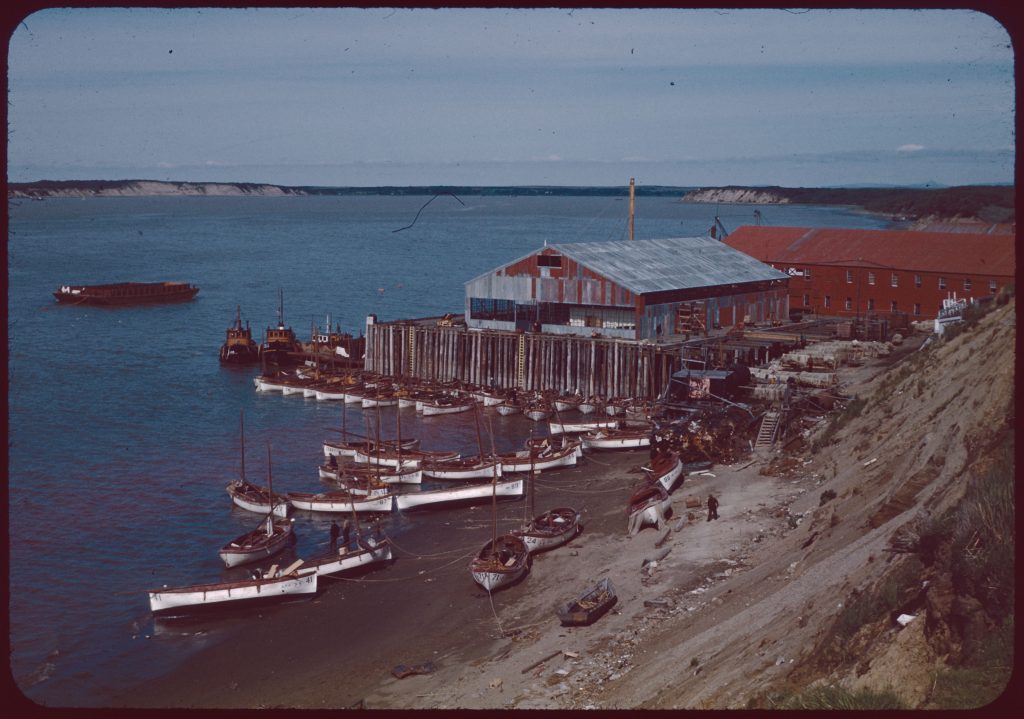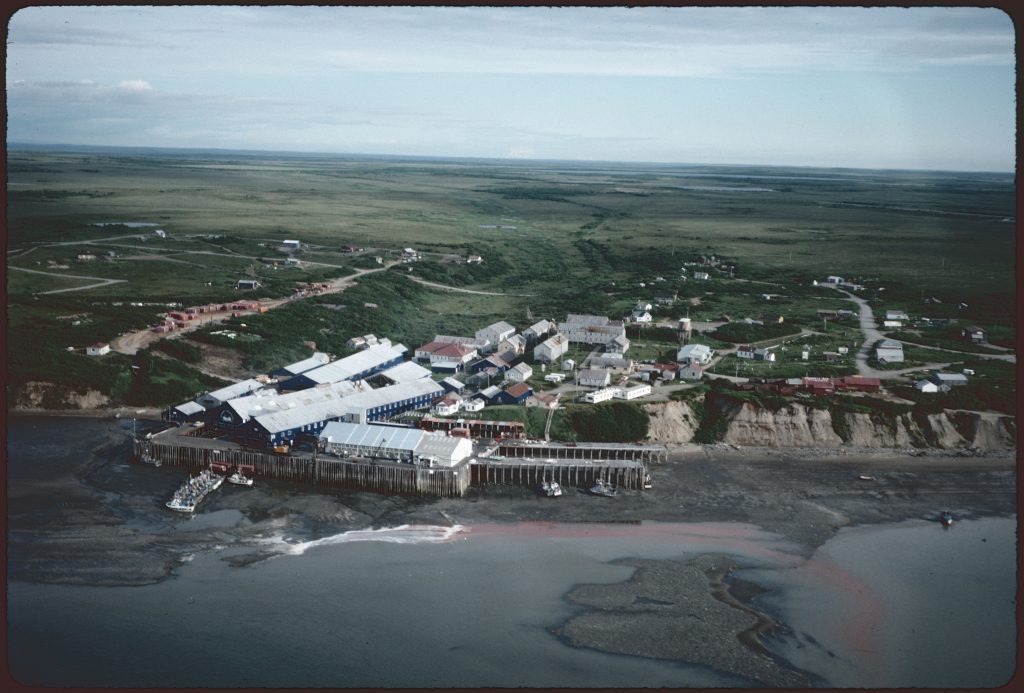
A 131-year-old cannery on the shoreline of South Naknek in Bristol Bay has been named to the National Register of Historic Places, after a years-long effort by the daughter of a former superintendent of the fish plant, who worked her way through college on the slime line.
“I don’t usually start projects thinking I will never finish it,” said Katherine “Katie” Ringsmuth, a professor of history at the University of Alaska Anchorage and the Alaska State Historian, who shepherded the NN Cannery onto the National Register, with help from an eclectic group of supporters. “It did get done, with a lot of people really supporting us. This might be the first Bristol Bay cannery on the National Register, but I hope it is not the last.”
Ringsmuth, the daughter of former NN Cannery superintendent Gary Johnson, recalls days on the slime line at South Naknek, earning enough money to pay for her education, which culminated in a doctorate from Washington State University in environmental and public history. When her dad retired, she said, the cannery became a focus of her academic interest as well.
“This project is taking the perspective of the cannery workers themselves, not the fishermen as much,” said Bob King, former dean of Alaska seafood industry reporters, who spent years in Dillingham reporting on the Bristol Bay fishery.
While much has been written about the fishermen engaged for decades in the world’s largest wild sockeye salmon fishery, not much has been written about the cannery workers themselves, “so this really adds to the historical record,” King said.
“Bristol Bay had had some 60 canneries spread around the region over the decades. Over 130 years,” King added. “Most of them for one reason or another fell apart, runs changed, the technology changed they didn’t need as many canneries, but this is one of the earliest starting, longest running canneries.”

The cannery, now owned by Trident Seafoods, was initially a project of the Alaska Packers Association, and, over the years it operated, employed hundreds of residents and thousands of transient workers who produced more canned salmon than any other cannery in Alaska, according to information compiled through the history project.
Oral histories gathered by Ringsmuth tell of the perspective of people who worked in the cannery, as fish processors laundry and kitchen workers, machinists, office administrative staff and superintendents, as well as commercial fishermen and village residents. Among them was the late Trefon Angason Jr., a Bristol Bay Native Corp. shareholder born in South Naknek in 1947 to Vera and Trefon Angasan Sr., both of whom also worked for the cannery. In his interview with Ringsmuth he spoke openly about preferential treatment given by particular superintendents, the racism that persisted dealing with segregation and the relationship between various ethnic groups and the local community and cannery. He also spoke of the importance of the cannery to the community and preserving cannery history, Ringsmuth said.
The Alaska State Museum is partnering with the NN Cannery History Project on a museum exhibit coming in February 2022, to celebrate the history and people involved in Alaska’s canned salmon history.
The exhibit will be titled “Mug Up,” after the cannery term for a coffee break, with a focus of Alaska’s forgotten cannery crews through the lens of the Alaska Packers Association.





